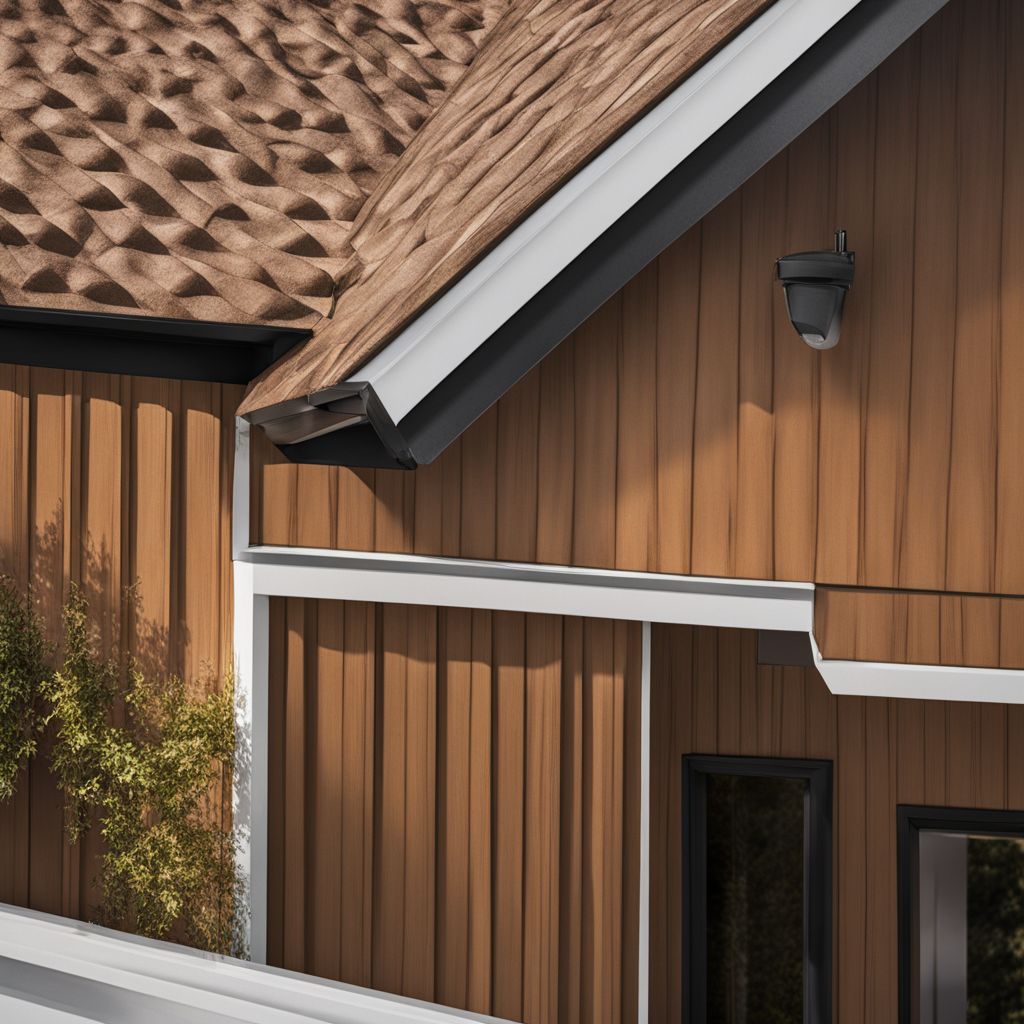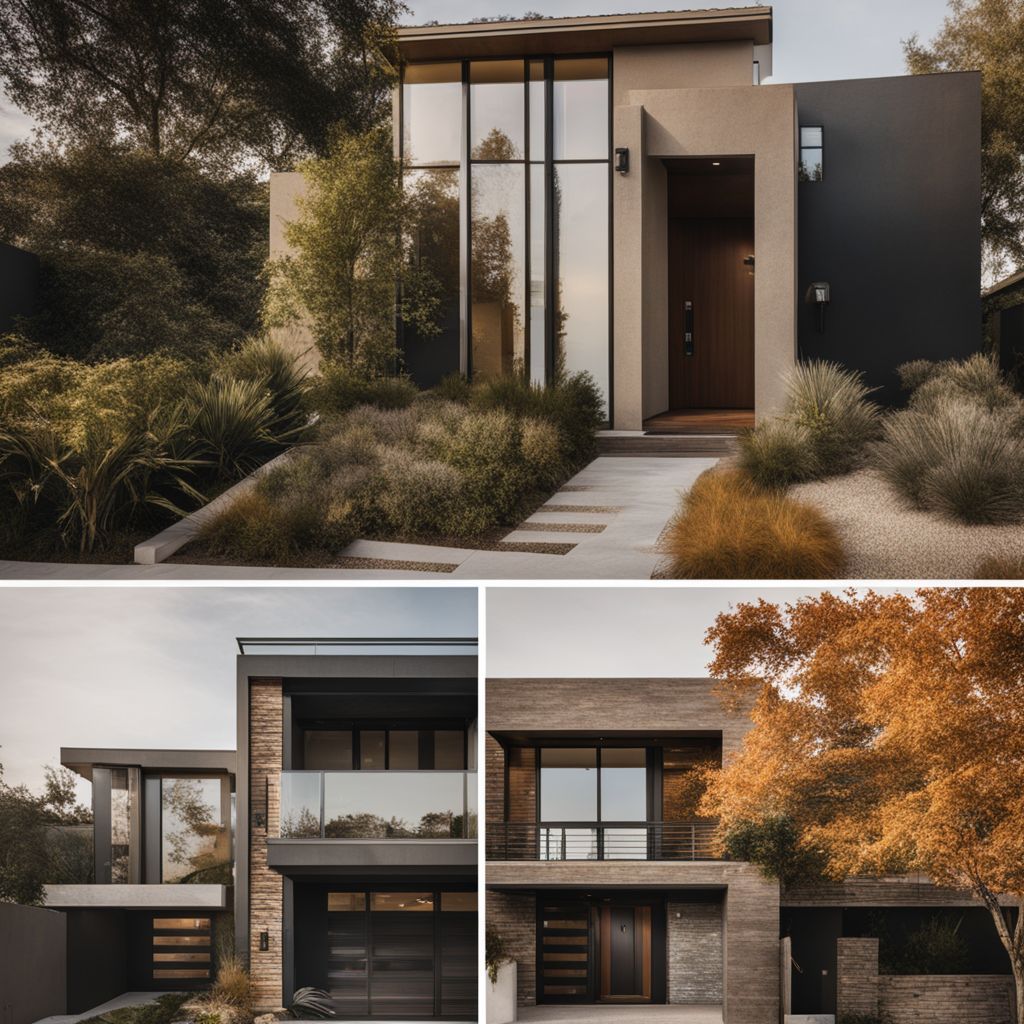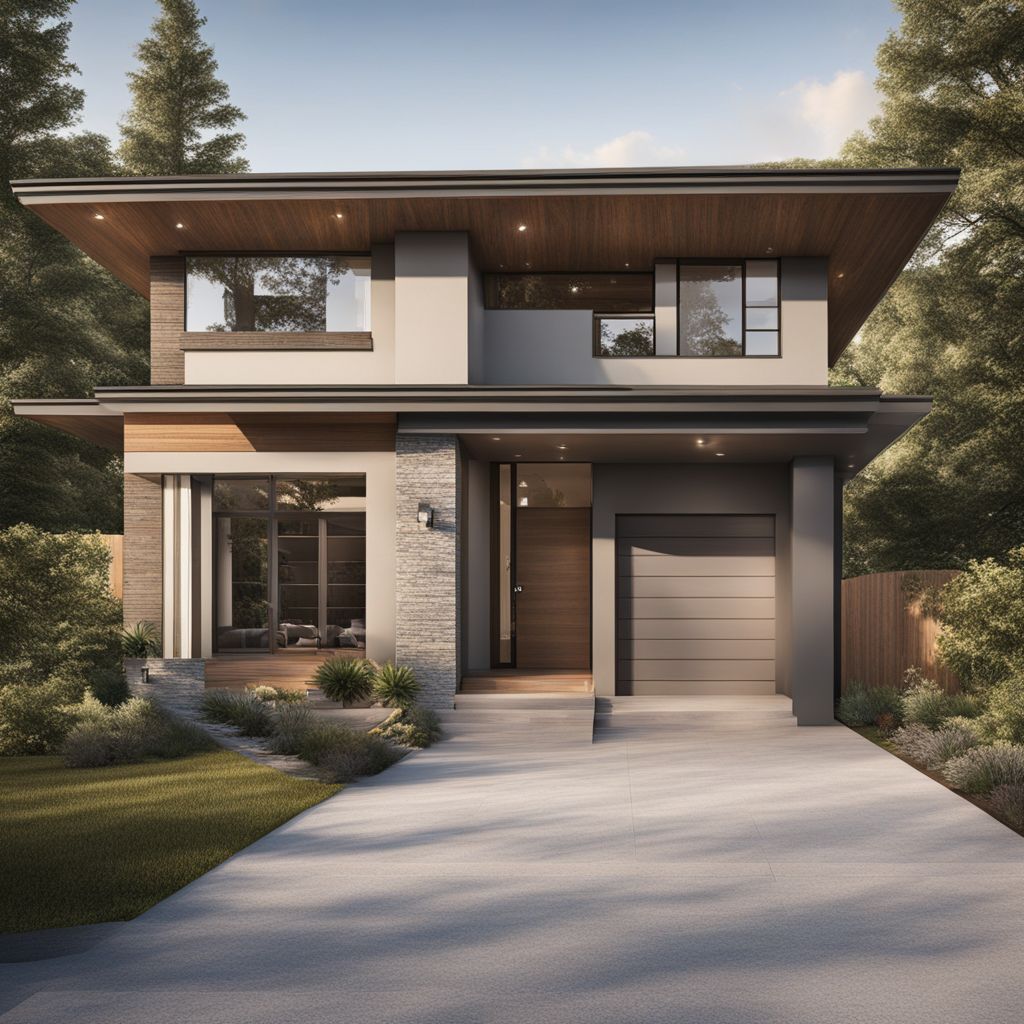Choosing the right exterior for your home can be a challenge. Different options offer varied benefits, but stucco stands out for its versatility and aesthetic appeal. Stucco is not just another siding material; it’s a way to add texture and character to your home.
Its popularity comes from both its durability and the range of textures available.
One important fact: different types of stucco finishes can drastically change your home’s appearance. From smooth to textured, each finish offers a distinctive look. This blog post will guide you through five popular types of stucco finishes, sand, cat face, lace, smooth, and Santa Barbara, and additional options like dash, worm/putz, and English finishes.
Learn how choosing the right type can improve your home and the around style.
Ready for an exterior makeover? Keep reading.
Key Takeaways
- Stucco is a mix of sand, lime, cement, and water that makes homes look good and last long.
- There are many stucco finishes like sand, cat face, lace, smooth, and Santa Barbara. Each one gives your house a different look.
- Smooth finishes make houses look modern; textured ones like lace hide wall flaws.
- Choosing the right stucco finish depends on your home’s style and the job’s specifics.
- It’s important to keep stucco clean and fix any damage to make it last longer.
Understanding Stucco Finishes and Textures
Stucco gives your home a cool look and can survive bad weather. It has many styles, making it suitable for any house’s appearance.
What is stucco?
Stucco is a mix of sand, lime, water, and cement. This blend makes it strong and lasting for covering outside walls. People have used stucco for a long time. Now, we add cement to the mix to make modern stucco even better.
This new mixture sticks well to surfaces and can last many years with good care.
Its texture adds beauty and character to homes. With several types like smooth stucco finish or lace stucco finish, you can pick one that fits your home’s look the best. Each type has its own distinct style that can make a house stand out or match its surroundings perfectly.
Benefits of using stucco for home siding
Stucco stands out as a top choice for home siding due to its durability and high-quality material. It lasts long, resisting wear from weather and time. Homes with stucco siding enjoy less outside noise and save on energy bills because stucco is thick and provides good insulation.
This means the inside of your house stays cooler in summer and warmer in winter without using a lot of electricity or gas for heating or cooling.
Choosing stucco also adds beauty to your home. It comes in various textures that can match any style, making it versatile for different looks. Whether you want a smooth finish or something more textured like sand or lace, there’s a types of stucco texture that fits perfectly.
Plus, it helps keep moisture out, preventing mold inside walls and maintaining air quality indoors. With choices ranging from Santa Barbara finish to English stucco texture, homeowners can pick the right one to uplift their home’s exterior appeal while enjoying practical benefits.
How different finishes and textures can enhance the appearance
Different types of stucco texture add depth and visual interest to buildings. They can make colors pop and hide imperfections. For example, a sand stucco finish gives a coarse feel while a smooth texture offers a sleek look.
A lace finish creates intricate patterns, adding character. Santa Barbara finishes bring out a subtle elegance with their fine texture. Each type plays a role in defining the building’s appearance, making it stand out or blend with its surroundings.
Choosing the right stucco texture can match your home’s style perfectly. Think about whether you want your home to catch people’s eyes or have a classic touch that ages well over time.
Also, consider how light hits your home; some textures reflect light beautifully, creating stunning effects during sunrise or sunset. Textures like cat face or dash finish have distinct appearances that suit different architectural styles, from modern to traditional homes.
5 Most Popular Types of Stucco Finishes
Exploring stucco finishes reveals a variety of texture and color for your home. From smooth to rugged, these top picks offer something for every style.
Sand/float finish
The sand/float finish comes from a mix of sand, cement, lime, and water. People use a float tool to make it look right. This finish looks grainy, like sand on your home’s outside walls.
It is simple but still very popular for stucco finishes.
Many call it roughcast, knockdown finish, fine dash finish, or pebble stucco because of how it looks and feels. Its texture stands out on any house. For this kind of work, you need someone skilled with stucco application – a good contractor who knows how to match this style to your home exactly.
Cat face finish
Cat face finish stands out for its mix of smooth and rough patches, called “cat faces.” These varying textures add depth and interest to a home’s exterior. Created either from traditional or synthetic stucco, this technique allows for wide creativity.
You can choose small or large cat faces spread across the surface. This flexibility makes it perfect for adding character to any home style, earning its place among the top five stucco finishes.
Known also as Montalvo or California finish, it gives walls a memorable touch with every application. Helping homes look their best, skilled stucco contractors use tools like trowels and brushes to apply this finish carefully.
The size and spacing of cat faces are adjusted based on personal preference, making each wall distinct. Homeowners looking for a custom look often go for this durable option that blends well with different home designs.
Lace finish
Lace finish, often known as lace and skip or skip and trowel, stands out for its ability to cover wall flaws. It’s the most common choice on homes due to this feature. This versatile stucco texture lets homeowners hide imperfections easily, making it a go-to option for many.
Home exteriors gain a distinctive look with a lace finish, fitting various house styles effectively. Its widespread use in different types of stucco textures highlights its popularity and practicality for achieving visual goals on building exteriors.
Smooth finish
A smooth finish on stucco presents a clean, modern look to any building’s exterior. Many homeowners find this type of texture the most appealing due to its elegant appearance. Achieving such a polished look requires skilled workers who pay careful attention to detail during application.
This texture is especially popular because it offers buildings a sophisticated flair, making them stand out with a refined style.
Choosing a smooth stucco finish adds sophistication and transforms your home’s siding into something truly special. Since it’s highly sought after, having this finish can also increase the perceived value of your property.
It’s important to work with experienced contractors familiar with applying stucco finishes to guarantee the best possible outcome for your home’s exterior wall.
Santa Barbara finish
Santa Barbara stucco finish brings a subtle texture and lighter touch. This style is perfect for those aiming for a look that mirrors the early California adobe buildings. It’s created to show off a semi-smooth, irregular surface.
Homes and businesses pick this finish for its classic appeal.
The smooth version of Santa Barbara finish skips the relief textures, offering an even softer appearance. People choose it for its simplicity and connection to historic design, making their spaces stand out with understated elegance.
Other Stucco Finish Options
Looking for something different? Check out other stucco finish options that can make your home stand out. From Dash to English finishes, each has its own look and feel.
Dash (roughcast) finish
Dash finish gives stucco a gritty look. It has small peaks sticking out. You can choose light, medium, or heavy dash finishes. This style is old but still looks good today. Workers can put it on by hand or spray it on walls.
This roughcast finish makes buildings stand out. Because of its texture, dash finish catches the eye from far away. People have loved this look for many years. It fits well with many home styles.
Worm/putz finish
Worm/putz finish, also called swirl finish, is not seen much these days. It makes the wall look like it has worm paths all over it. This happens because its stucco mix has bigger pieces that leave grooves when spread with a trowel.
People choose this texture for its distinct look even though sand and dash finishes are more popular.
Picking a worm stucco finish means your house will stand out. It fits well with certain styles of homes and designs. Even if it’s less common, some people love how different it looks compared to smoother textures or heavy dash finishes.
English finish
The English finish isn’t as common but stands out for its elegance. It gives buildings a heavy, textured look that feels royal. Imagine the surface of an ancient castle – that’s what English stucco finish mimics.
With this style, contractors apply the stucco in multiple layers to create a special texture. This method guarantees durability and adds a rich visual appeal to any home.
Choosing an English stucco finish means picking something special for your exterior. It demands skill in application, showing off craftsmanship in every corner. Homes with this finish enjoy a timeless charm, blending traditional aesthetics with modern quality.
Whether it’s applied broadly or in detailed sections, it draws eyes and invites compliments from onlookers.
Tips for Choosing the Right Stucco Finish
Pick a stucco finish that matches your home’s style and lasts long. Keep reading for more tips!
Matching stucco to your home’s style
Picking the right stucco finish for your home depends a lot on its style. If you have a modern house, smooth or Santa Barbara finishes might be your best pick. These types can give your place a clean and sleek look.
For homes with more character, like Spanish or Mediterranean styles, a textured finish like lace or cat face might add just the right touch.
Think about what feels right for your home’s overall vibe. Darker colors with heavy textures work well on large houses in natural settings. Lighter colors and smoother textures fit better with small homes or those in sunny areas.
It helps to see pictures of finished works that use different stucco finishes to decide which one aligns with what you imagine for your own space.
Considering the application process
The right stucco finish application is key to a beautiful home. For each project, pick from eight techniques like sand, cat, and dash finishes. This choice depends on the style of your house and the look you want.
Always work with a qualified stucco contractor who knows how to apply stucco properly. They can help choose the best texture that matches your home’s design. Keep in mind, some finishes fit better with certain types of stucco systems.
For instance, a smooth texture finish is perfect for synthetic stucco but also works well on fine cement traditional stucco. So, deciding how to put on the stucco is as important as picking the type of finish.
Stucco lath plays a role too; it’s a metal mesh laid out before applying any kind of texturing or finishing stroke—making sure that whatever choice you make sticks correctly and lasts long without cracks or damage over time.
Each method gives your building its distinct look whether you go for heavy dash roughcast or light worm finish—following expert advice ensures durability while achieving desired custom looks outside your place.
Working with a qualified stucco contractor
Hiring the right stucco contractor is a must. You want someone who knows how to mix and apply stucco finishes with designs in mind, aiming for top quality. Research them well. Ask for bids from different contractors to compare prices and work samples.
Great work makes repairs easy later on.
A good contractor will offer you choices from many stucco finish options like sand finish, dash stucco finish, or cat face finish. They guide you on what matches your home style and how each texture can change your home’s look.
They also explain how they do their job, from mixing the base coat to applying custom finishes, and make sure you’re happy at every step.
Maintaining Stucco Finishes
Keeping your stucco in good shape is key. Simple steps can keep it looking fresh and prevent major repairs.
Patching and repairing damaged stucco
Fixing cracked and damaged sand stucco starts with removing the bad parts. First, clean the area well. Then, apply a patch. For smaller cracks, gun caulk works well to fill them in.
Blend it smoothly into the existing stucco for a seamless look. This method keeps the wall strong and prevents more damage from happening.
Proper cleaning and maintenance techniques
To maintain stucco finishes, inspect them regularly for cracks or peeling. Cleaning your stucco exterior is essential to keep it free from dirt, dust, and organic debris that can dull its appearance.
Start by pre-wetting the wall before washing it gently with a garden hose. This simple process helps preserve the textured stucco’s finish, ensuring it stays as good-looking as when first applied.
Patching damaged areas promptly contributes greatly to extending your stucco siding’s lifespan. Consider hiring a qualified stucco contractor who understands how different textures and finishes respond to repairs and maintenance.
They have the right tools and knowledge to handle everything from minor fixes to large recoating projects, keeping your home’s exterior in top condition.
When to consider recoating or refinishing the stucco
Look at your stucco’s texture and color. If they start to fade or show cracks, it’s time for recoating or refinishing. Recoating adds a fresh layer to protect and beautify the surface.
Refinishing changes the texture or color, giving your home a new look.
Sun, rain, and wear can damage stucco over time. Check for areas where water collects. These spots need fixing first to prevent more harm. Every few years, inspect your stucco closely.
This helps you spot problems early and decide if you need to recoat or refinish the exterior of your home with durable stucco finishes.
Conclusion
Stucco gives homes a great look with many styles. Sand, cat face, and lace finishes are some popular choices. Each has its own special way to make your house stand out. For the best results, find a good stucco expert.
Keep in mind – the right stucco finish will bring your home’s beauty to life!
FAQs
1. What types of stucco textures can I choose for my home?
You can select from numerous stucco finishes, including cat stucco finish, unique texture options, and heavy finishes. Each type gives your exterior a distinct look.
2. How does the texture of the stucco spread affect its appearance?
The texture directly impacts the final appearance, creating either a smooth or rugged surface on the exterior. The method used to spread the stucco defines its unique texture.
3. Can I find pictures of different stucco finishes before deciding?
Yes, there’s a comprehensive guide to different types with pictures available. This helps you visualize how each finish looks once applied.
4. Is there a special way to apply heavy finish stucco?
Indeed, applying a heavy finish requires specific techniques to ensure even coverage and desired textural effects on your home’s exterior.

Jonathan Fleck, a seasoned 40-year-old writer and editor, boasts an impressive 12-year career specializing in the dynamic realms of Home and Garden. As the Chief Editor of Home and Around Blog, Jonathan is at the forefront of curating content that resonates with enthusiasts and novices alike. His vast knowledge encompasses a range of topics, including houseplants, small space gardening, home DIY, small space living, and crafting.
Jonathan’s academic journey includes a graduation with a degree in the History of Art from Long Island University (LIU) in New York City, New York, United States. This educational background, coupled with his passion for creative expression, has shaped his unique approach to writing about the aesthetics and functionality of living spaces.
With a keen eye for detail and a wealth of experience, Jonathan has become a trusted voice in the Home and Garden community. His articles not only provide practical advice but also inspire readers to transform their living environments into personalized havens. Whether it’s cultivating a thriving indoor garden, optimizing small living spaces, or embarking on creative DIY projects, Jonathan Fleck’s expertise shines through, making him a respected authority in the field.



